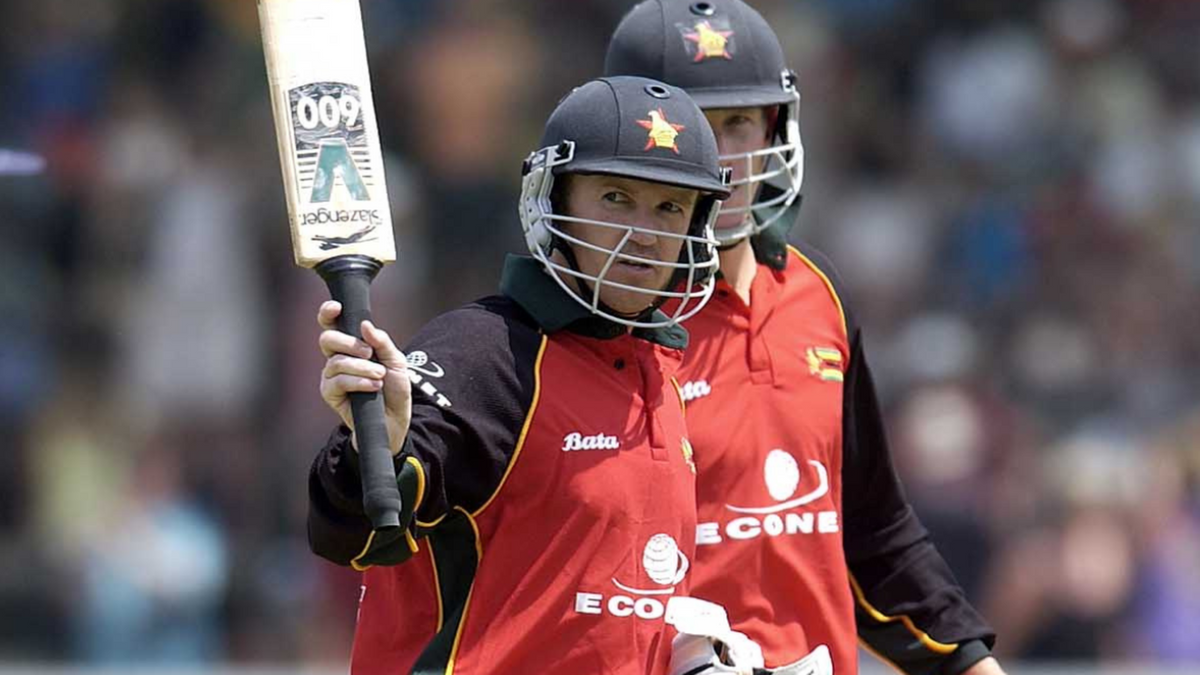
Andy Flower, the coach, has had one of the most reputed careers in the game, but as a player, he was also one of the finest of his generation. A look back at the numbers that defined one of, if not the greatest, Zimbabwe careers.
The youngest generation of cricket followers probably identifies Andy Flower as the sombre, rarely-smiling IPL coach in the Lucknow Super Giants camp. A decade ago, he was one of the finest international coaches around – under him, England won everything from the Ashes to the T20 World Cup. Go back a decade and a half further, and there was Flower, the batter, in his pomp, grinding attacks into dust.
Flower’s Test career lasted just over a decade. He didn’t total even 5,000 career runs (contemporary greats have managed at least twice more). And yet, he was one of the finest of his generation, and easily Zimbabwe’s best batter ever. From his debut, until his last Test, only three batters – Sachin Tendulkar, Steve Waugh and Rahul Dravid – scored more runs at a higher average. His ability and ease against pace was clear from the onset, but he developed against spin to become one of the very best around the globe.
He kept wicket in 55 out of his 63 Tests – among designated keepers across his career, he easily had the most runs, with twice as many centuries (12) as the next best, Alec Stewart. More than two decades later, still holds the record for the highest Test score by a keeper (232*). In fact, among all wicketkeepers in history, only Flower has four 150+ Test scores. With at least 10 innings, only AB de Villiers has a higher average.
That he was Zimbabwe’s best Test batter is a fact easily established. In the run charts, his brother Grant is next, 1,500 runs away. Grant and Brendan Taylor hit six centuries, Andy had 12. No one had a better average in Zimbabwean Test history until Gary Ballance played one match this year and retired with an average of 155.
It’s also worth considering that Flower played most of his innings at No.5 – across his career, only Steve Waugh scored more runs in that position. In fact, among all No.5 batters in Test history, only five have more runs at a better average. Add another layer – his captaincy: among all wicketkeeper-captains, he had the third-most runs – 1,232 at 49.28 – the average highest among all those with at least 200 runs.
The years 2000 and 2001 were easily his best in Tests – he averaged 80.38 and 89.90 respectively, hitting three centuries each. It included a bumper tour of India, when he amassed 540 runs in two Tests, and was out only twice. That year, Flower hit seven consecutive Test fifties, equalling the great Everton Weekes’ 50-year-old record.
The following year, he hit 142 & 199* against South Africa, making him the first keeper-batter to hit twin tons in the same Test. That Harare Test displayed the divide between Flower and his teammates – he made more than 50 per cent of Zimbabwe’s runs in the game as they were forced to follow on and lost by nine wickets. Soon, he became the No.1 ranked Test batter in the world, above Tendulkar, Waugh, and all the other greats of that time.
In ODI cricket, the best of his flamboyance came out, particularly his sweeping brilliance and feet movement against spinners. The reverse sweep was among the best there was, at a time when it still ranked very high in the risk category. He still is Zimbabwe’s highest-run scorer in the format despite batting everywhere from No.1 to 7. At every position – barring the one-off appearance at seven – he averaged over 30. It started with a century on ODI debut – in the 1992 World Cup – and included three more global tournament campaigns.
When he quit in 2003, he had the most runs by a wicketkeeper in ODI history – 5,845 – and also the most fifty-plus scores (50). Since then, only Kumar Sangakkara, MS Dhoni and Adam Gilchrist have hit more fifty-plus scores, and each of them is considered a true great of the format.
What makes Flower’s achievements even more special is that he revelled at a time when Zimbabwe was still emerging as an ODI force, and was far behind most of their competitors in Tests. During his career, Zimbabwe’s win/loss percentage was the ninth-best in ODIs, and they won just seven out of their 65 Tests.
When Flower stepped away, he was just 34, and a few more years could have propelled his numbers to a truly elite level. The circumstances were unique, with the 2003 World Cup marking a turbulent end. He and Henry Olonga wore black armbands on the field to protest the policies of Robert Mugabe, Zimbabwe president at the time. Following that World Cup, he never played for Zimbabwe again.
But what Flower couldn’t achieve in team achievements, he did a decade later with the coaching cap on. Under him and Andrew Strauss, England prospered. The rewards are still being reaped.








